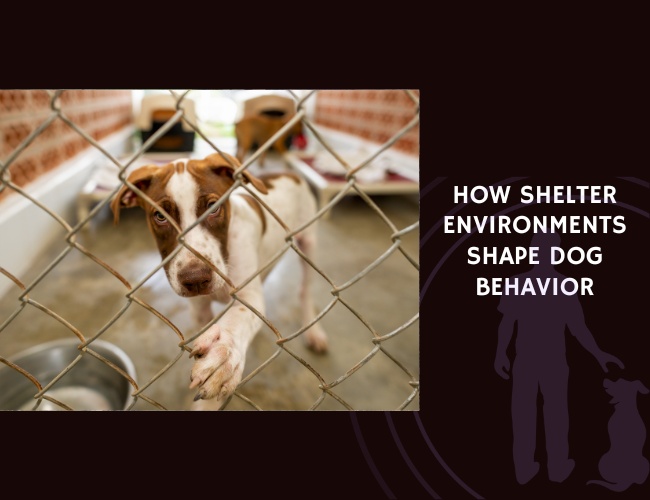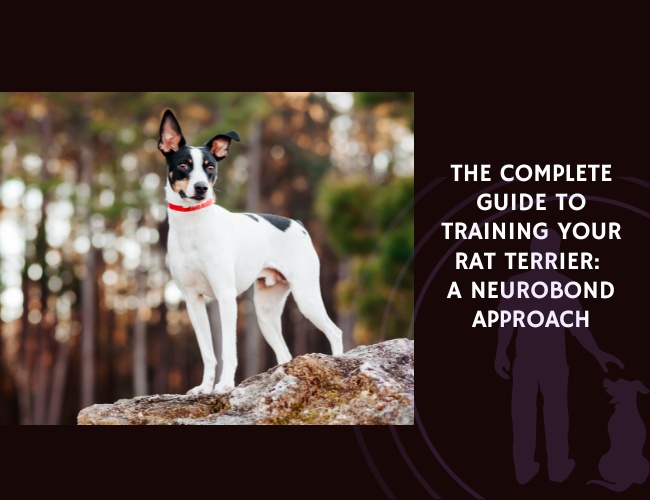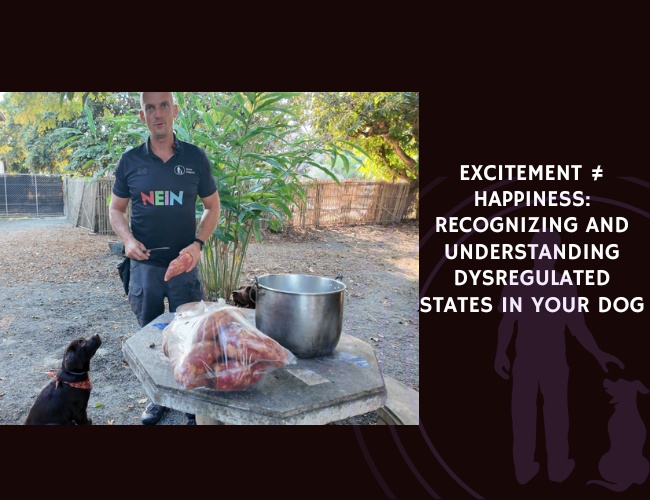Introduction to Shelter Environments
Different Types of Shelters and Their Characteristics
Understanding the different types of shelters is crucial for anyone involved in animal welfare. Shelters can broadly be classified into municipal and private shelters, each with its unique characteristics and challenges.
Municipal shelters are government-funded and primarily serve the community by taking in stray, abandoned, or surrendered animals. They often face resource constraints, including limited space and funding. This can affect the care and enrichment activities available for dogs. Despite these challenges, municipal shelters are essential as they serve as a safety net for animals in need.
Private shelters (often non-profit organizations) usually have more flexibility in their operations. They rely on donations, grants, and volunteer support. Private shelters may offer specialized programs, and due to their smaller size, they often provide more personalized care. This can result in better conditions and enrichment opportunities for dogs. However, they also face the constant challenge of securing enough funds to maintain their operations.
Impact of Physical Environment on Dog Behavior
The physical environment of a shelter significantly influences the behavior and well-being of dogs. Dogs are sensitive to their surroundings, and certain environmental factors can either reduce or exacerbate stress.
Space: Adequate space is fundamental for a dog’s comfort and well-being. Proper space allows dogs to move freely, exhibit natural behaviors, and avoid feeling trapped. Overcrowded shelters often contribute to heightened aggression, anxiety, and undesirable behaviors such as excessive barking.
Noise: High noise levels are common in shelters and can be extremely stressful for dogs. Continuous exposure to barking, cleaning equipment, and human activities can lead to sensory overload. This stress manifests in behaviors like cowering, pacing, or excessive barking. Lowering noise levels through soundproofing, playing calming music, or scheduling quiet hours can significantly improve a dog’s anxiety.
Cleanliness: A clean environment is crucial in preventing the spread of diseases and ensuring the overall health of shelter dogs. Clean kennels, regular sanitization, and proper waste management reduce stress linked to poor hygiene. Dogs in clean and well-maintained spaces generally exhibit fewer stress-related behaviors and have better physical health.
Key Factors Affecting Shelter Conditions
Several key factors contribute to the overall conditions of a shelter, directly impacting the dogs housed within.
- Space: Ensuring enough room for each dog to have its own territory is crucial. Overcrowding can lead to increased stress and aggression among dogs.
- Noise: Efforts to reduce noise pollution, such as providing soundproof kennels or playing soothing music, can help create a calmer environment.
- Cleanliness: Regular cleaning schedules and high hygiene standards prevent the spread of diseases and minimize stress caused by poor living conditions.
- Staff and Volunteer Training: Well-trained staff and volunteers can better meet the needs of the dogs, providing care, exercise, and enrichment activities that keep dogs mentally and physically stimulated.
- Enrichment Activities: Offering various forms of enrichment, such as toys, social interactions, and sensory stimuli, helps mitigate boredom and stress, promoting better overall behavior and well-being.
Creating a balanced and supportive environment in shelters doesn’t happen overnight. It requires careful planning, adequate resources, and ongoing commitment from staff and volunteers. When shelters prioritize space, noise management, and cleanliness, they create a more humane and supportive environment for dogs. This commitment not only enhances the well-being of the dogs but also improves their chances of being adopted into forever homes.
These foundational elements are vital for anyone working in or supporting shelters. As we continue our exploration, we’ll delve deeper into recognizing how stress manifests in shelter dogs and the critical importance of early intervention to mitigate its impact.

Recognizing Stress in Shelter Dogs
Stress in shelter environments is a common challenge, affecting dogs’ well-being and behavior. Understanding the indicators and measuring stress is crucial for timely intervention. Recognizing and addressing stress can significantly enhance a dog’s experience in shelters, increase their chances of adoption, and promote overall welfare.
Common Behavioral Indicators of Stress in Shelter Environments
Dogs often show their stress through various behavior changes. These indicators provide valuable insights into their emotional state. Here are some common signs to look out for:
- Excessive Barking: Continuous barking can be a sign of stress or anxiety, especially in a noisy shelter environment.
- Destructive Behaviors: Chewing, scratching, or other destructive activities may indicate frustration or distress.
- Hiding or Withdrawal: Dogs that seek seclusion or avoid interaction might be experiencing stress.
- Panting and Drooling: While these can be normal, excessive panting and drooling are often physical signs of stress.
- Aggression: An increase in aggressive behaviors toward other dogs or humans can stem from stress or fear.
- Repetitive Actions: Behaviors such as pacing, spinning, or tail-chasing are often signs of mental distress.
- Loss of Appetite: A stressed dog may show reduced interest in food, affecting their health.
Physiological Measures Used to Assess Stress Levels
Behavioral signs are essential, but physiological measures provide concrete data on a dog’s stress. Here are some methods used:
- Heart Rate Monitoring: Elevated heart rates can indicate heightened stress levels. Monitoring heart rates over time can reveal stress patterns.
- Cortisol Levels: Cortisol, known as the stress hormone, can be measured through saliva, urine, or blood tests. High levels signify stress.
- Body Temperature: Stress can lead to an increase in body temperature, so consistent monitoring can help in early detection.
- Respiratory Rate: An unusually high respiratory rate can be a physical response to stress. Observing changes in breathing patterns can be informative.
Importance of Early Stress Recognition for Intervention
Early recognition of stress is key to implementing interventions that improve a dog’s welfare. Here’s why it matters:
- Timely Support: Identifying stress early allows shelter workers to provide necessary support and calm the dog, preventing exacerbation of stress-related behaviors.
- Behavior Modification: Early recognition enables the start of behavior modification techniques that can alleviate stress and result in better coping mechanisms.
- Improved Health: Reducing stress early can prevent health issues related to chronic stress, such as weakened immune systems and digestive problems.
- Enhanced Adoption Prospects: Dogs that are less stressed are more likely to exhibit positive behaviors that appeal to potential adopters, increasing their chances of finding a forever home.
By recognizing and addressing stress in shelter dogs, we can make significant strides in improving their quality of life, behavior, and adoption potential. This requires continuous observation, appropriate interventions, and a compassionate approach to handling each dog’s unique needs.
Building strong and positive human-dog connections within shelter environments further aids in stress reduction, fostering trust, and enhancing welfare. By focusing on creating meaningful human-canine bonds, we lay the groundwork for happier, healthier shelter dogs.

The Human-Canine Connection in Shelters
Impact of Staff and Volunteer Interactions on Dog Behavior
Interactions with shelter staff and volunteers play a crucial role in the behavior and well-being of dogs in shelters. Positive human contact can greatly reduce stress and improve a dog’s chances of being adopted. Dogs are highly social animals and thrive on companionship, making the quality of human interactions within shelters integral to their mental and emotional health.
Shelter staff and volunteers offer a range of interactions that can impact a dog’s behavior. Activities such as walking, grooming, playing, and simple acts of kindness can enhance a dog’s mood and overall disposition. Regular and meaningful interactions help dogs to feel secure, loved, and understood, which can mitigate anxieties stemming from the shelter environment.
Moreover, consistent human interaction promotes socialization, aiding dogs in developing better manners and easing their transition into a permanent home. For some dogs that come to shelters with a history of abuse or neglect, these positive interactions can be life-changing, helping them to rebuild trust and confidence in humans.
Role of Consistent Positive Human Contact
Consistency is key when it comes to developing trust and positive behavior patterns in shelter dogs. Regular, positive human contact helps dogs develop predictable routines, which can make their time in the shelter less stressful. Routine interactions with the same personnel allow dogs to recognize familiar faces and form bonds, fostering a sense of security and stability.
Positive reinforcement techniques during these interactions can help to reinforce good behavior. For instance, rewarding dogs with treats, praise, or affection when they exhibit desirable behaviors promotes repetition of those behaviors. This approach is not only effective in managing behavior but also serves to strengthen the human-canine bond.
Additionally, consistent positive interactions can significantly reduce the likelihood of behavioral problems stemming from anxiety or fear. Dogs that feel loved and secure are less likely to engage in destructive behaviors and more likely to maintain a calm demeanor, making them more appealing to potential adopters.
Effectiveness of Structured Training Programs
Structured training programs are essential for preparing shelter dogs for adoption. These programs provide dogs with the skills they need to integrate smoothly into a new home environment. Training programs that incorporate positive reinforcement are especially effective, as they build on the existing human-canine bond while teaching important commands and behaviors.
Effective training programs address common behavioral issues such as jumping, barking, and house training. By working on these behaviors, shelters can increase the adoptability of their dogs, ensuring that they are ready to be part of a family.
Furthermore, training programs provide mental stimulation for dogs, reducing boredom and its associated destructive behaviors. Training sessions can be designed to be fun and engaging, further enriching the dogs’ environment and enhancing their well-being.
Training also enhances the relationships between dogs and their human caregivers. It allows staff and volunteers to understand the specific needs and personalities of each dog, enabling them to provide better, more individualized care. This personalized attention can make a significant difference in the dog’s behavior and quality of life.
By focusing on the human-canine connection within shelters, we can make a tremendous impact on the well-being and adoptability of the dogs in our care. When dogs receive love, consistency, and training, they are more likely to thrive and find their forever homes.

Environmental Enrichment Strategies
Creating a supportive environment for shelter dogs requires more than just the basics of food, water, and shelter. Environmental enrichment, which addresses animals’ needs for mental and physical stimulation, plays a crucial role in enhancing their well-being and behavior. This chapter delves into the various forms of enrichment, practical ways to implement these programs, and how they benefit dogs.
Various Forms of Enrichment
Shelter dogs can benefit immensely from different types of enrichment that engage their senses and provide outlets for natural behaviors. Here are some of the most effective forms of enrichment:
Auditory Enrichment
Auditory enrichment includes playing calming music or nature sounds to reduce stress and create a soothing environment. Studies have shown that classical music and soft tunes can lower anxiety levels in dogs.
Olfactory Enrichment
Providing olfactory enrichment, such as introducing various scents, can stimulate dogs’ sense of smell and keep them engaged. This could include safe herbs like lavender and chamomile or even novel scents from other animals like rabbits or birds.
Tactile Enrichment
Tactile enrichment involves giving dogs different textures to explore. This could be in the form of rubber chew toys, rope toys, or soft blankets. Tactile enrichment allows dogs to use their mouths and paws in ways that they naturally would in a home environment.
Practical Implementation of Enrichment Programs
Now that we understand the types of enrichment, let’s look at practical ways to implement these programs in shelters.
Auditory Enrichment Implementation
Setting up a music schedule can be a simple yet effective way to start with auditory enrichment. Play calming music during stressful times, like when the shelter is busy or at night.
- Create a playlist of calming music.
- Schedule specific times for music to play.
- Observe and adjust based on the dogs’ reactions.
Olfactory Enrichment Programs
Olfactory enrichment can be implemented by creating scent trails or providing scent boxes that dogs can explore.
- Use a variety of safe, dog-friendly scents.
- Rotate scents regularly to keep dogs engaged.
- Scatter scent boxes throughout the kennel area.
Tactile Enrichment Ideas
For tactile enrichment, offer a range of toys and textures for dogs to explore.
- Ensure a variety of toys are available.
- Rotate toys regularly to maintain interest.
- Provide different textured bedding materials.
Benefits of Enrichment on Dog Behavior and Welfare
Implementing an enrichment program can greatly enhance the behavior and welfare of shelter dogs. Here’s how:
Reduction in Stress
Enrichment activities reduce stress by providing mental stimulation and reducing boredom. When dogs are engaged and mentally stimulated, they are less likely to engage in destructive behaviors due to frustration.
Improvement in Socialization
Enrichment can also improve socialization skills. For example, interactive toys and games encourage dogs to play and interact with each other, which can help them learn to communicate and coexist more effectively.
Enhanced Adoption Prospects
Enrichment programs help dogs display more calm and positive behaviors, making them more appealing to potential adopters. A dog that appears relaxed and well-adjusted is more likely to be adopted than one that seems anxious and stressed.
Increased Physical Activity
Physical enlargement activities, such as interactive toys or scent trails, encourage dogs to move and explore, which helps with overall physical health and reduces obesity-related issues.
By engaging in enrichment strategies, shelters can significantly improve the quality of life for their dogs and increase their chances of finding forever homes.
The positive impact on behavior and well-being is undeniable, setting the stage for the next essential component of dog welfare in shelters.
Understanding Adoption Success
Role of Behavioral Assessments in Predicting Adoption Outcomes
Behavioral assessments are crucial tools in shelters to ensure successful adoption outcomes. These assessments help predict how a dog might behave once placed in a home environment. Typically, staff and volunteers evaluate dogs using standardized tests that measure a variety of behaviors, such as friendliness, aggression, and response to stimuli. This information helps match dogs with potential adopters who can provide the appropriate environment and care.
Behavioral assessments can reveal potential red flags that may pose challenges in a home setting. For instance, a dog displaying resource-guarding behaviors might require training and a home without young children. Conversely, a dog that scores high on socialization tests might flourish in a family environment with lots of activity. Consistent, thorough behavioral assessments not only improve adoption success rates but also reduce the likelihood of dogs being returned to shelters.
Factors Influencing Return Rates and Failed Adoptions
Understanding what factors contribute to failed adoptions is essential for reducing return rates. Several key factors influence whether a dog is returned to a shelter after adoption:
- Behavioral Issues: Often, dogs are returned due to behavioral problems that were not evident during the adoption process or that developed post-adoption. These issues can include separation anxiety, excessive barking, and aggression.
- Mismatch with Owner Lifestyle: Sometimes, adopters realize they cannot meet the dog’s needs due to lifestyle constraints like work schedules, space, or activity levels. This mismatch can lead to a return.
- Lack of Training and Support: Post-adoption support and training resources play a critical role. Adopters who receive guidance and access to training programs are more likely to overcome initial adjustment challenges.
- Health Concerns: Undiagnosed or underestimated health issues can also lead to dogs being returned. Early veterinary assessments and transparent communication about a dog’s health condition can mitigate this.
Shelters can address these issues by offering comprehensive post-adoption support, providing training resources, and ensuring thorough behavioral and health evaluations before adoption. This support helps new pet owners transition smoothly and handle any arising challenges effectively.
Correlation Between Length of Stay and Behavioral Changes
The length of time a dog spends in a shelter can significantly impact its behavior. Prolonged stays often lead to the development of new behavioral issues or the exacerbation of existing ones.
- Stress and Anxiety: Extended periods in the shelter environment can increase stress and anxiety levels in dogs. This heightened stress can manifest as repetitive behaviors, aggression, or withdrawal, making the dog appear less adoptable.
- Socialization Deficits: Dogs with prolonged stays may miss opportunities for socialization, affecting their ability to interact positively with humans and other animals. This lack of socialization can contribute to fear-based behaviors, making integration into a new home more challenging.
- Learned Helplessness: Some dogs may develop a sense of learned helplessness, where they stop trying to engage with their environment or people. This condition can be mistaken for low energy or a calm demeanor but can indicate underlying depression or inactivity due to stress.
- Detrimental Habits: Extended shelter stays may reinforce undesirable habits like excessive barking, destructive chewing, or soiling in their space. These behaviors can be off-putting to potential adopters and may lead to returns if not addressed promptly.
To mitigate these issues, implementing environmental enrichment strategies and consistent positive human interaction is essential. Enrichment activities, such as puzzle feeders, sensory play, and regular exercise, keep dogs mentally stimulated and better prepared for adoption. Additionally, fostering programs can alleviate the negative impact of long shelter stays, providing a home environment where dogs can thrive while waiting for their forever homes.
Next, we will explore recommendations and best practices to improve shelter environments, provide effective enrichment, and optimize adoption success rates. This approach ensures that shelters can offer a supportive, nurturing environment to enhance the well-being and adoptability of dogs in their care.
Recommendations and Best Practices
Evidence-Based Strategies for Improving Shelter Environments
Creating a nurturing and supportive environment for shelter dogs is crucial for their well-being and successful adoption. Evidence-based strategies provide a structured approach to enhance shelter conditions, thereby positively impacting the behavior and health of the dogs.
Space Optimization
Adequate space is essential to ensure dogs can move comfortably and avoid stress-induced behaviors. Here are some key recommendations:
- Individual Housing: Whenever possible, provide individual kennels to avoid stress from close proximity to other dogs.
- Exercise Areas: Include designated spaces where dogs can run, play, and exercise. This helps reduce pent-up energy and associated behavioral issues.
Noise Control
Excessive noise levels can significantly stress shelter dogs. Implementing noise control measures can create a calmer environment:
- Soundproofing: Install soundproofing materials in kennels and common areas to reduce noise levels.
- Quiet Hours: Establish designated quiet hours to give dogs downtime without the added stress of constant noise.
Cleanliness and Hygiene
Maintaining high cleanliness and hygiene standards in shelters is vital to prevent disease and create a pleasant living environment:
- Regular Cleaning: Implement a rigorous daily cleaning schedule for all areas, including kennels, exercise yards, and common areas.
- Sanitation Protocols: Use appropriate cleaning agents that effectively eliminate pathogens without causing harm to the dogs.
Guidelines for Implementing Effective Enrichment Programs
Environmental enrichment plays a significant role in enhancing the behavioral and psychological well-being of shelter dogs. Here’s how to implement effective enrichment programs:
Auditory Enrichment
Using sound to create a soothing environment can reduce stress levels:
- Music Therapy: Play calming music or nature sounds in the kennels. Music with slower tempos has been shown to soothe dogs.
Olfactory Enrichment
Engaging a dog’s sense of smell can provide mental stimulation and alleviate boredom:
- Scent Trails: Create scent trails with dog-safe essential oils or treats to encourage natural foraging behaviors.
- Scent Swaps: Rotate different scents monthly to keep the dogs engaged.
Tactile Enrichment
Providing varied textures for the dogs to interact with can enhance their sensory experiences:
- Diverse Toys: Offer a range of toys with different textures and shapes to encourage play and exploration.
- Sensory Blankets: Use blankets with varied textures in kennels to provide comfort and stimulation.
Methods for Optimizing Adoption Success Rates
Improving adoption success rates requires a comprehensive approach that includes proper behavioral assessments and ongoing support for new pet owners.
Behavioral Assessments
Accurate behavioral assessments are critical for matching dogs with suitable adopters:
- Standardized Tests: Use standardized behavior assessment tools to evaluate temperaments and identify potential behavioral challenges.
- Pre-Adoption Checklists: Create detailed pre-adoption checklists to ensure prospective adopters understand any special needs or behaviors of the dog.
Post-Adoption Support
Supporting adopters post-adoption can reduce return rates and ensure lasting placements:
- Training Resources: Provide resources and referrals for local dog trainers to help with any behavioral issues.
- Follow-Up: Conduct regular follow-ups with adopters to offer support and advice during the transition period.
Education and Outreach
Educating the community about responsible pet ownership and the adoption process can improve outcomes:
- Workshops and Seminars: Host workshops and seminars on topics like dog training, behavior management, and the adoption process.
- Educational Materials: Provide pamphlets, videos, and online resources to inform prospective adopters about caring for shelter dogs.

Wrapping Up with Pawsitive Change
In the grand canvas of animal welfare, understanding how shelter environments shape dog behavior is like painting the most vivid details with the brightest hues. Whether in the bustling world of municipal shelters or the personalized care of private ones, the physical environment sets the stage for a dog’s journey.
So, as we leave the realm of barking dogs and bustling shelter hallways, let’s carry with us the knowledge that adequate space, soothing sounds, and clean surroundings can transform a shelter into a sanctuary.
Now, it’s your turn to make a difference!
Are you an animal lover, shelter volunteer, or just someone who wants to contribute to the well-being of dogs in shelters? Here’s your call to action:
- Start small: If you can’t donate, you can still help. Spread awareness about the importance of shelter conditions through your network.
- Volunteer: Offer your time to play with the dogs, clean their spaces, or even raise funds.
- Advocate: Reach out to local government officials to ensure municipal shelters receive the support they need.
- Share: If you’ve ever adopted a shelter dog, share your story. It could inspire others to do the same.
Together, we can shape shelters into places of comfort and healing, transforming the lives of dogs and changing the world, one wagging tail at a time. Let’s make every shelter a beacon of hope and love.
What’s your story? How have you contributed to enhancing shelter environments? Share it with us in the comments below. Let’s inspire each other to create a world where every dog thrives!










